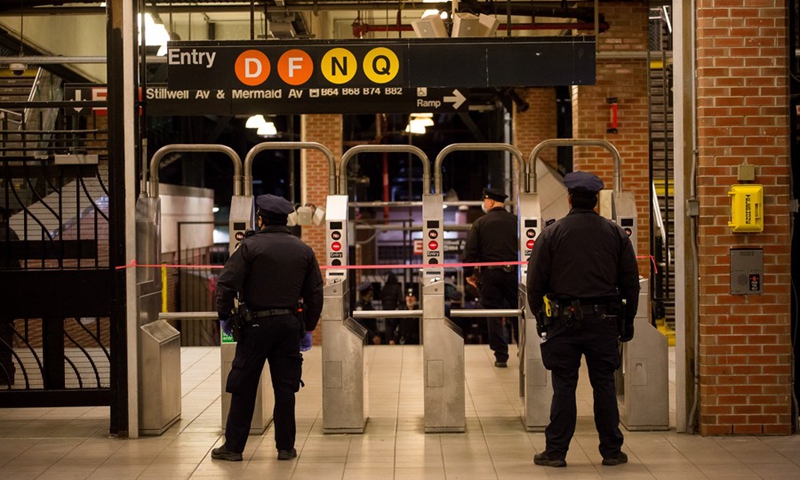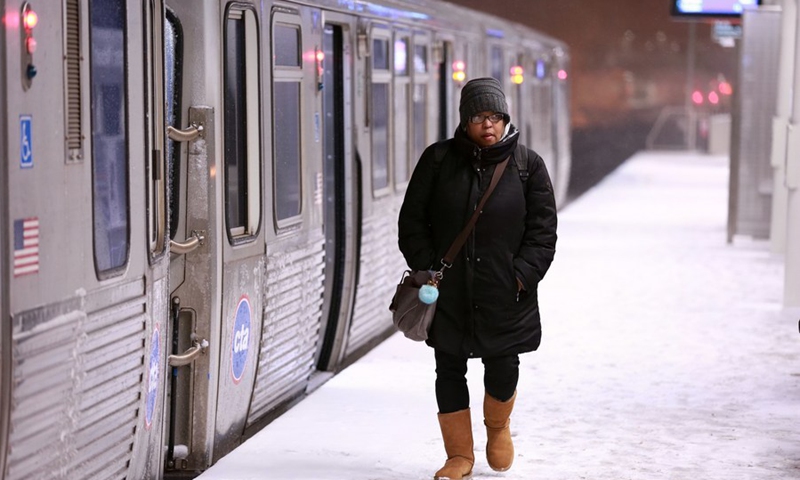Mass transit faces huge service cuts across U.S.: media
Source: Xinhua Published: 2020/12/8 11:58:58

Police officers stand guard at a subway station in the Brooklyn borough of New York City, the United States, May 6, 2020. (Photo: Xinhua)

A woman walks at a platform of a subway station in Chicago, the United States, Jan. 17, 2020.(Photo: Xinhua)
Public transportation systems across the United States are in an extraordinary financial crisis set off by the COVID-19 pandemic, which has starved transit agencies of huge amounts of revenue and threatens to cripple service for years, the New York Times reported on Monday.
In Boston, transit officials warned of ending weekend service on the commuter rail and shutting down the city's ferries. In Washington, weekend and late-night metro service would be eliminated, and 19 of the system's 91 stations would close, said the paper.
In Atlanta, 70 of the city's 110 bus routes have already been suspended, a move that could become permanent. And in the New York City, home to the largest mass transportation system in North America, transit officials have unveiled a plan that could slash subway service by 40 percent and cut commuter rail service in half, it added.
"The profound cuts agencies are contemplating could hobble the recoveries of major cities from New York to Los Angeles and San Francisco, where reliable transit is a lifeblood of the local economies," said the report.
Trains and buses carry the office workers, shoppers and tourists who will help revive stores, restaurants, cultural attractions, hotels and other key businesses that have been battered by the outbreak.
What's more, "the financial collapse of transportation agencies would especially hurt minority and low-income riders who tend to be among the biggest users of subways and buses," reported the Times.
For months, transit officials around the country have pleaded for help from the federal government, but with no new lifeline forthcoming and many systems facing December deadlines to balance their budgets, agencies have started to outline doomsday service plans that would take effect next year.
It is unclear whether ridership will ever fully return to pre-pandemic levels even after effective vaccines become widely available. Some commuters may end up working from home permanently; others may abandon public transit if cuts cause service to deteriorate, according to the report.
Posted in: AMERICAS